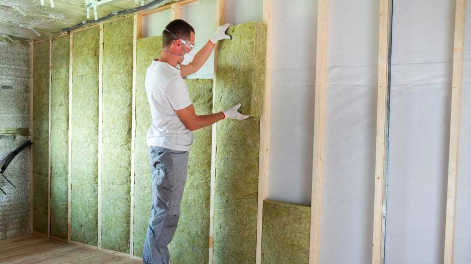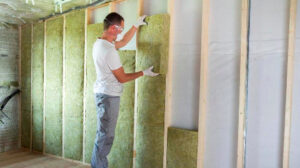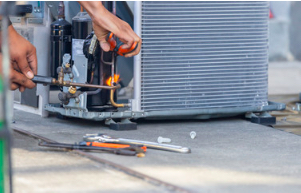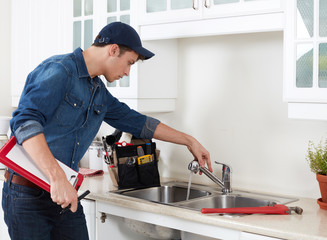
Revitalizing your home with a fresh coat of paint is one of the easiest and most cost-effective home improvement projects. It can transform your house into a more comfortable and appealing space. An experienced house painter loads the roller thoroughly and slowly twirls it as they roll it toward the middle of the wall (or up to the ceiling). This will set the paint and prevent it from dripping off.
Whether you’re planning to sell your home or want to improve its appearance, curb appeal is an important consideration. This broad term describes a property’s attractiveness from the sidewalk, including landscaping, house painting and decorative elements. According to some research at home improvements boosting your home’s curb appeal can increase its value by up to 7%.
Often, real estate agents stress the importance of a property’s curb appeal when listing it for sale. A drab exterior can make it difficult for prospective buyers to picture themselves living in the home, and it may cause them to lose interest. However, a well-maintained lawn, brightly painted trim and a welcoming front porch can set a positive first impression.
While the value of a property can be determined by its location, layout and renovations, many people underestimate the impact of curb appeal on how attractive and well-maintained a home is. A few relatively inexpensive tasks or improvements can significantly boost a home’s curb appeal, such as adding a fresh coat of paint, cleaning up landscaping and replacing outdated light fixtures or numbers on a mailbox.
Painting your home a new color can transform its look, but before you start any DIY projects, check with your neighborhood’s homeowner association to ensure that the colors you choose are acceptable. In some neighborhoods, the color palette is very strict, and you don’t want to risk losing your home’s resale value by choosing a color that doesn’t fit in with the rest of the community.
Curb appeal can also include other cosmetic upgrades, such as a freshly planted tree or a reworked entryway design. The addition of a large planter box filled with colorful flowers adds a welcoming touch to an entryway, while a neatly trimmed hedge or flowerbed can enhance a walkway or front yard.
While the term “curb appeal” can sound like a buzzword, making your home’s exterior attractive is an important part of the home improvement process. It will make it easier to attract potential buyers, and can help you avoid costly repairs or renovations in the future.
Interior Decorating
Interior painting is a popular way to revamp living spaces and enhance aesthetics. Homeowners may decide to take on a DIY house painting project or hire professional services. Regardless of the type of project, choosing the right paint is critical to ensuring that the final result will be long-lasting and durable. It’s also important to understand how trends and color choices affect the painting process.
When choosing colors for the walls in your home, it’s essential to consider how the color will complement existing furnishings and fit into your design vision. A good place to start is by using home design apps that can provide inspiration and help you find a color that suits your personality and home decor.
While the tools and methods of modern day painting may seem to be highly advanced, the practice itself is quite ancient. Evidence of painted stonework dates back tens of thousands of years, and this early practice was likely used to brighten up living spaces and protect the stone from weather damage.
People continued to innovate how they made paint, developing exciting new shades and improving the application process. This led to the rise of professional house painters in Europe, who formed guilds in the 1200s. Today, house painting is a thriving profession that provides many people with full-time employment and self-employment opportunities.
One of the most important parts of a quality house painting job is proper prep work. Preparation can vary by job, but usually includes sanding and scraping the surface. It’s also a good idea to prime the surface before applying paint. This step can prevent the surface from absorbing too much of the liquid and causing bubbling.
It’s recommended that you repaint your home regularly, especially if it is exposed to harsh weather conditions. A fresh coat of exterior house paint will not only make your home look better, but it will also protect the wood from rot and insect infestation.
While DIY projects can be an affordable option, it’s generally recommended to leave the task of painting your home to the professionals. Hiring a professional house painter will guarantee that the results are of high quality and last for a long time. In addition, professionals have the experience and equipment needed to tackle tough tasks like high ceilings and tight corners.
Mold Prevention
Mold is a type of fungus that thrives in wet areas. It’s common in nature, and we see it in things like decaying leaves, grass clippings, and even food in the refrigerator. But, if certain types of mold get into your home and grow out of control, they can pose health risks to you and your family. They can also damage your home, lowering its resale value and making it harder to sell.
Mold prevention is a critical part of the house painting process. Mold can be a serious problem and can cause a variety of respiratory problems for those with allergies. There are several ways to avoid it, including regular cleaning and inspections and adding mold inhibitors to paint.
The best way to prevent mold is to keep moisture levels low. You can use a dehumidifier or air conditioning to help reduce humidity, and make sure any areas that are damp are fully cleaned and dried out. It’s also a good idea to inspect any parts of your home that have experienced water damage, as leaky roofs and broken pipes can boost humidity levels and foster mold growth.
When it comes to cleaning, bleach is the most effective solution for removing mold from hard surfaces. But, it’s important to use a fresh bottle of bleach prior to cleanup, as it degrades quickly in an unopened container. Other cleaning solutions include hydrogen peroxide, which works well on most surfaces but shouldn’t be used in the shower or around any appliances that may release fumes.
Ventilation is also crucial for preventing mold, so open windows and doors to allow for proper airflow. If possible, add fans to rooms such as bathrooms and kitchens that are more prone to condensation, as these can speed up the drying process.
To avoid future mold growth, regularly check your home’s temperature and humidity levels with a hygrometer. Keep these levels as close to 50% as possible, and repair any areas that are higher than this. Similarly, add mold inhibitors to paints before you start painting any walls. These can be purchased at most home improvement and paint stores.
Safety
When painting your home, it is important to remember safety. Whether you are an experienced professional or a DIYer, there are certain risks associated with this home improvement process. Proper preparation and safety equipment can help reduce these risks and ensure the job is completed without incident.
Ladders are a common tool for house painters, but they can be dangerous. Falling from a ladder can cause serious injuries. It is important to follow ladder safety procedures and always have someone watch you when working at heights. Moreover, it is important to practice good housekeeping on the jobsite and remove any items that could be tripped over or obstructed while working.
The chemicals in paints and other coating materials can irritate the skin, eyes, and lungs. They are also flammable. Proper ventilation is vital to keep toxic vapors from building up in the air. Opening windows and using fans can help to circulate the air, but it is best to use a respirator when spraying or painting indoors. It is also a good idea to wear goggles and gloves while working with these products.
Paint fumes can be especially dangerous for those who are sensitive to odors, pregnant women or babies. They can also lead to dizziness or nausea for some individuals. When painting inside, it is best to choose low VOC products and work during mild weather so doors and windows can be kept open to prevent heat or cold stress.
It is also important to test for lead before sanding or scraping. Lead paints were banned from residential use in 1978, but older homes may still contain them. Using a test kit can allow you to detect and remove any lead before it becomes a hazard. Additionally, it is a good idea to use a face mask when sanding or scraping, and to keep any paints, solvents, or stain strippers away from gas appliances.

 Insulation removal can be a complex and time-consuming process. It requires special equipment and knowledge to do it properly. This is why many homeowners choose to hire professional insulation removal services. This can save them a lot of time and energy. In addition, it ensures that the job is done correctly and safely.
Insulation removal can be a complex and time-consuming process. It requires special equipment and knowledge to do it properly. This is why many homeowners choose to hire professional insulation removal services. This can save them a lot of time and energy. In addition, it ensures that the job is done correctly and safely.

 Having a home inspected is vital before putting it on the market, whether you are selling an existing property or building a new one. While some problems are cosmetic, others may indicate severe structural damage and need to be fixed in order for the house to be safe for inhabitants.
Having a home inspected is vital before putting it on the market, whether you are selling an existing property or building a new one. While some problems are cosmetic, others may indicate severe structural damage and need to be fixed in order for the house to be safe for inhabitants.